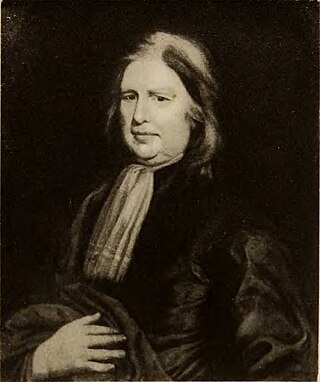Related Research Articles

Prince William Henry, Duke of Gloucester and Edinburgh, was a grandson of George II and a younger brother of George III of the United Kingdom.

General James Murray was a Scottish army officer and colonial administrator who served as the governor of Quebec from 1760 to 1768 and governor of Minorca from 1778 to 1782. Born in Ballencrieff, East Lothian, Murray travelled to North America and took part in the French and Indian War. After the conflict, his administration of the Province of Quebec was noted for its successes, being marked by positive relationships with French Canadians, who were reassured of the traditional rights and customs. Murray died in Battle, East Sussex in 1794.

General Meinhardt Schomberg, 3rd Duke of Schomberg, 1st Duke of Leinster, KG, was British Army officer and peer who served as Commander-in-Chief of the Forces in 1691. He spent the majority of his military career in service to William III of England, fighting in the Portuguese Restoration War, Franco-Dutch War, Williamite War in Ireland and the War of the Spanish Succession.

Charles Beauclerk, 1st Duke of St. Albans, KG was an illegitimate son of King Charles II of England by his mistress Nell Gwyn.

The Battle of Manila was fought during the Seven Years' War, from 24 September 1762 to 6 October 1762, between the Kingdom of Great Britain and the Kingdom of Spain in and around Manila, the capital of the Philippines, a Spanish colony at that time. The British won, leading to an eighteen-month occupation of Manila.

The Anglo-Spanish War was a military conflict fought between Britain and Spain as part of the Seven Years' War. It lasted from January 1762 until February 1763, when the Treaty of Paris brought it to an end.

Stephen Delancey was a major figure in the life of colonial New York. His children continued to wield great influence until the American Revolution.

Charles Bennet, 4th Earl of Tankerville, styled Lord Ossulston from 1753 to 1767, was a British nobleman, a collector of shells and a famous patron of Surrey cricket in the 1770s. He agreed a set of cricket rules that included the first mention of the Leg before wicket rule.

The 31st (Huntingdonshire) Regiment of Foot was an infantry regiment of the British Army, raised in 1702. Under the Childers Reforms it amalgamated with the 70th (Surrey) Regiment of Foot to form the East Surrey Regiment in 1881.

George Keppel, 3rd Earl of Albemarle KG PC, styled Viscount Bury until 1754, was a British general and nobleman. He is best known for his decisive victory over the Spanish during capture of Havana in 1762, as part of the Seven Years' War.
The 48th (Northamptonshire) Regiment of Foot was a regiment of the British Army, raised in 1741. Under the Childers Reforms it amalgamated with the 58th (Rutlandshire) Regiment of Foot to form the Northamptonshire Regiment in 1881.

The 43rd (Monmouthshire) Regiment of Foot was an infantry regiment of the British Army, raised in 1741. Under the Childers Reforms it amalgamated with the 52nd (Oxfordshire) Regiment of Foot to form the 1st and 2nd battalions of the Oxfordshire Light Infantry in 1881. The regiment went on to become the Oxfordshire and Buckinghamshire Light Infantry in 1908.

Brigadier-General Richard Kane was a British Army officer from Ireland who served as the governor of Gibraltar from 1720 to 1727. He also served as the governor of Menorca from 1733 to 1736.
The 79th Regiment of Foot was a British military unit, formed in 1757 at the beginning of the Seven Years' War. Its commander was Brigadier General William Draper.

Simón de Anda y Salazar was the Spanish governor-general of the Philippines from July 1770 to 30 October 1776. He was born in the Basque Country in northern Spain.

Harry Peckham was a King's Counsel, judge and sportsman who toured Europe and wrote a series of letters which are still being published over 200 years later. Peckham was a member of the committee that drew up early laws of cricket including the first inclusion of the leg before wicket (lbw) rule. The diarist James Woodforde makes reference to Peckham playing cricket at Oxford in 1760. and he was still playing in 1771.

The British occupation of Manila was an episode in the colonial history of the Philippines when the Kingdom of Great Britain occupied the Spanish colonial capital of Manila and the nearby port of Cavite for eighteen months, from the 6th October 1762 to the first week of April 1764. The occupation was an extension of the larger Seven Years' War between Britain and France, which Spain had recently entered on the side of the French.
Colonel William Fullarton of Fullarton was a Scottish soldier, statesman, agriculturalist and author. He sat in the House of Commons between 1779 and 1803.

Philip Dehany was a West Indies plantation owner and cricket pioneer. He sat in the House of Commons from 1778 to 1780.
References
- ↑ Dreaper, James (1998). Bristol's Forgotten Victor: Lieutenant-General Sir William Draper K.B. (1721-1787). Bristol: Bristol Historical Association. p. 3. ISBN 0901388785.
- ↑ Dreaper pp. 3–6
- ↑
- ↑ "Draper, William (DRPR740W)". A Cambridge Alumni Database. University of Cambridge.
- ↑
- ↑ Linda COLLEY: Leben und Schicksale der Elizabeth Marsh – Eine Frau zwischen den Welten des 18. Jahrhunderts, Aus dem Englischen von Ulrike Bishoff, (Zweitausendeins, 1. Auflage 2008), S. 243, 245, ISBN 978-3-86150-881-6
- ↑ Biddulph, John (1901). Stringer Lawrence, the father of the Indian army. London : J. Murray. p. 105. Retrieved 3 January 2022.
- ↑ Tracy, Nicholas (1995). Manila Ransomed. University of Exeter Press. pp. 109–115. ISBN 0859894266.
- ↑ Cricketana by James Mycroft, 1865
- ↑ Pall Mall, South Side, Past Buildings: Nos 94-95 Pall Mall: The Star and Garter, Survey of London: volumes 29 and 30: St James Westminster, Part 1 (1960), pp. 351–352. Retrieved 8 June 2008.